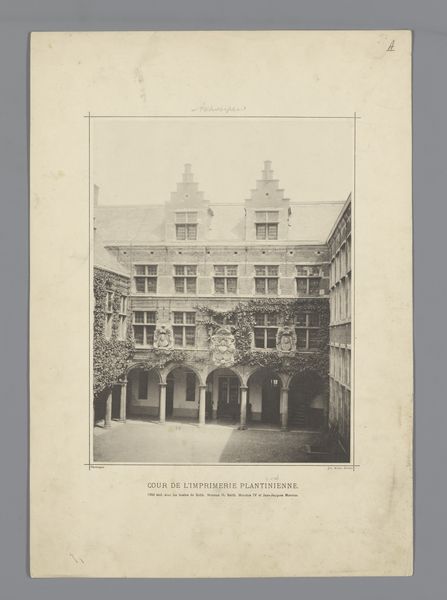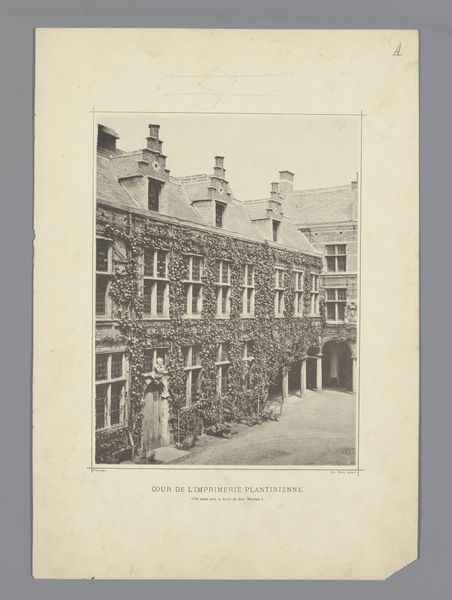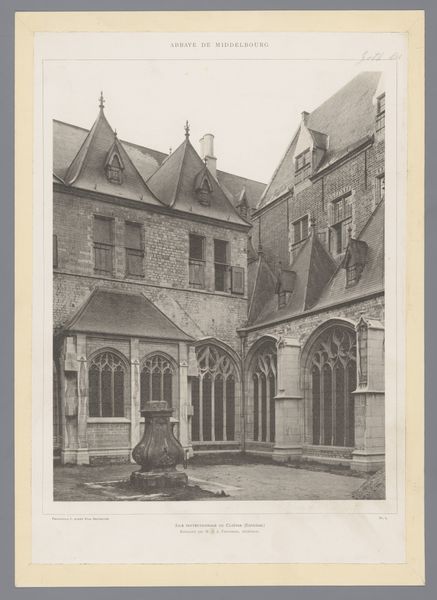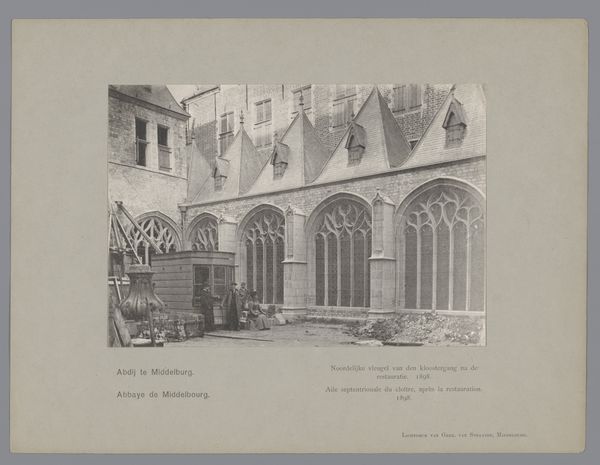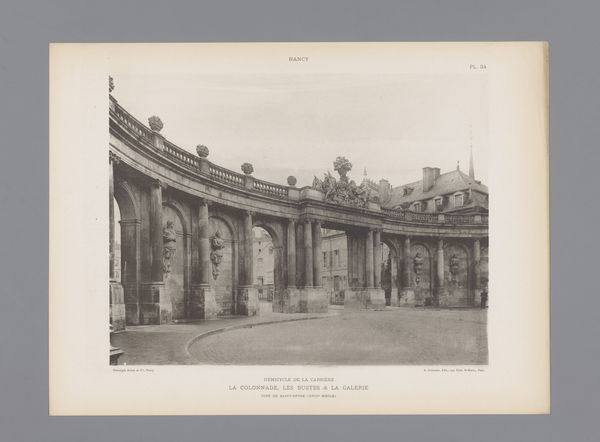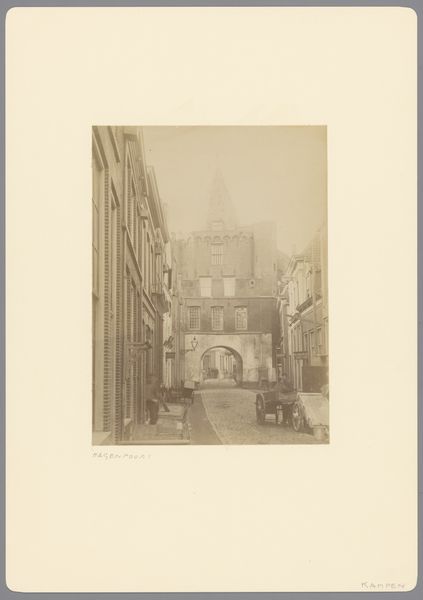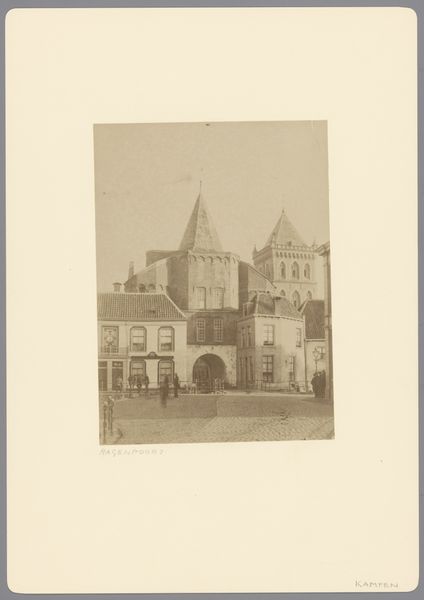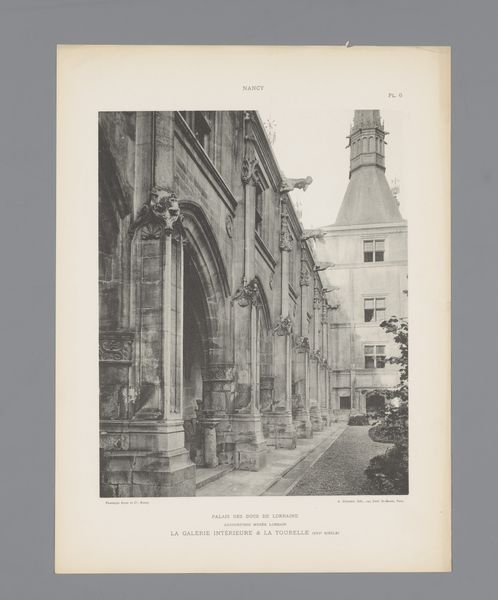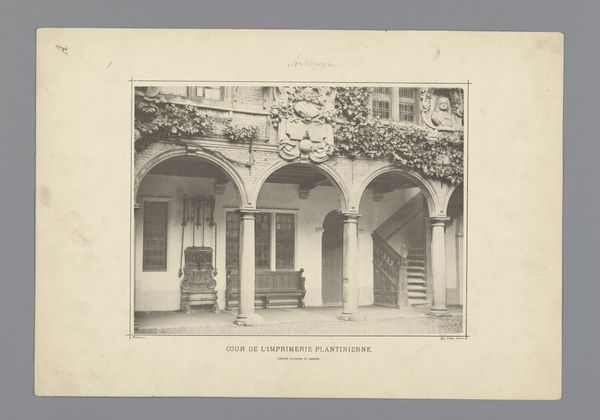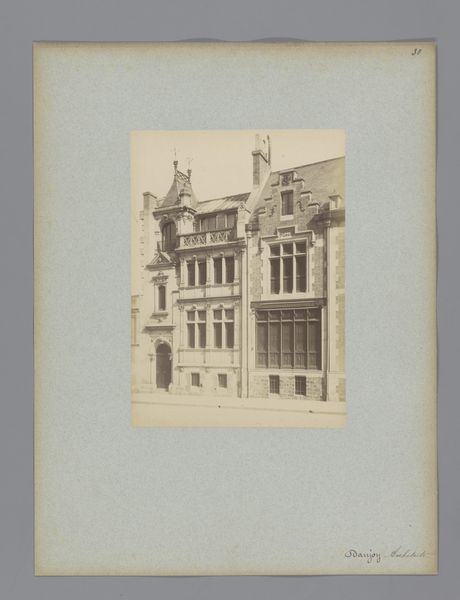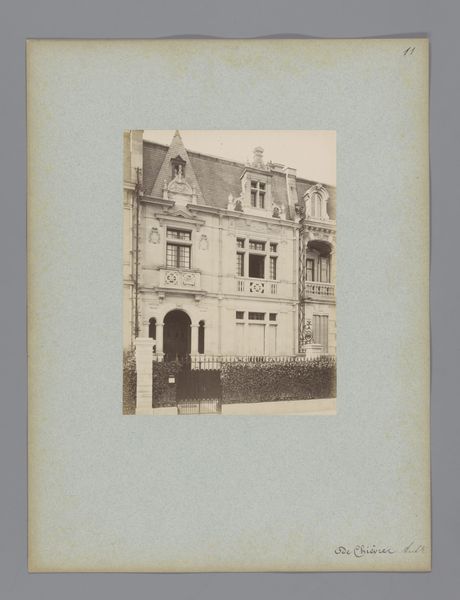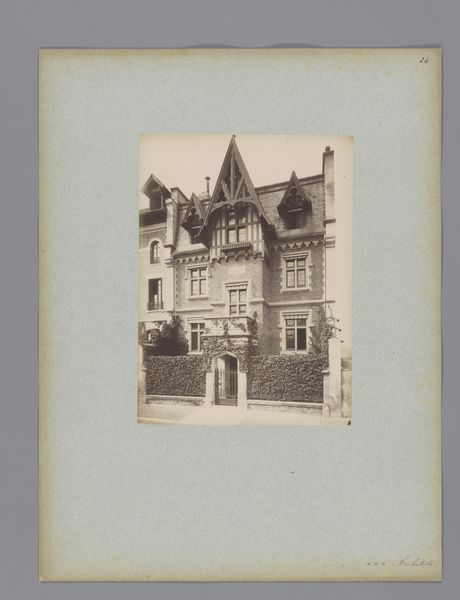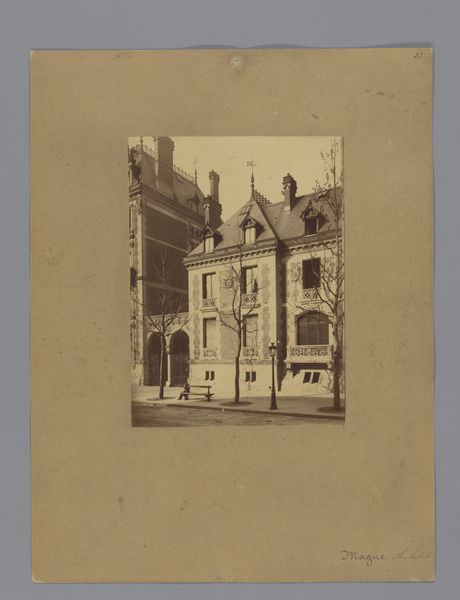
print, paper, photography, architecture
#
aged paper
#
homemade paper
#
paper non-digital material
#
pale palette
#
pictorialism
#
paperlike
# print
#
flat design on paper
#
light coloured
#
paper
#
photography
#
folded paper
#
cityscape
#
paper medium
#
soft colour palette
#
architecture
Dimensions: height 229 mm, width 309 mm
Copyright: Rijks Museum: Open Domain
Editor: So, this print is "Gezicht op het Muntplein van de Abdij te Middelburg" by Gebroeders van Straaten, circa 1900. It’s on paper and looks like a photographic print of a courtyard. It’s really neat how they've captured the light, but it feels almost... handmade in a way? What catches your eye when you look at it? Curator: Well, focusing on materiality, it’s interesting to see photography being treated with such emphasis on paper quality, bordering on craft. The "homemade paper" tag speaks volumes. What does the choice of paper – its texture, its possible imperfections – contribute to our understanding of the artwork’s function and meaning, beyond just documentation? Editor: I guess it makes it feel less like a purely objective record and more like... an artistic rendering? Maybe aiming for a specific aesthetic that was valued at the time? Curator: Exactly! Consider the broader social context: Pictorialism was trendy then, prioritizing artistic effect over sharp detail. The "pale palette" reinforces that. Now, how does this almost anti-industrial approach to photographic printing challenge traditional hierarchies between art and craft, particularly considering the increasing mechanization of image production at the turn of the century? Editor: It's like they're deliberately pushing back against mass production. It makes you think about the labour involved, too – carefully choosing the paper, the printing process. Almost a statement about slowing down and appreciating craftsmanship in a rapidly changing world. Curator: Precisely. By highlighting the means of production, it draws attention to the human element behind the image. Editor: It’s fascinating to consider the statement the materials make, and how this print engages in a dialogue about art, labour and industrialisation. Thank you for shining a light on all of that. Curator: And thank you for helping me see this familiar image with fresh eyes. Material analysis really does bring new depths to it.
Comments
No comments
Be the first to comment and join the conversation on the ultimate creative platform.
